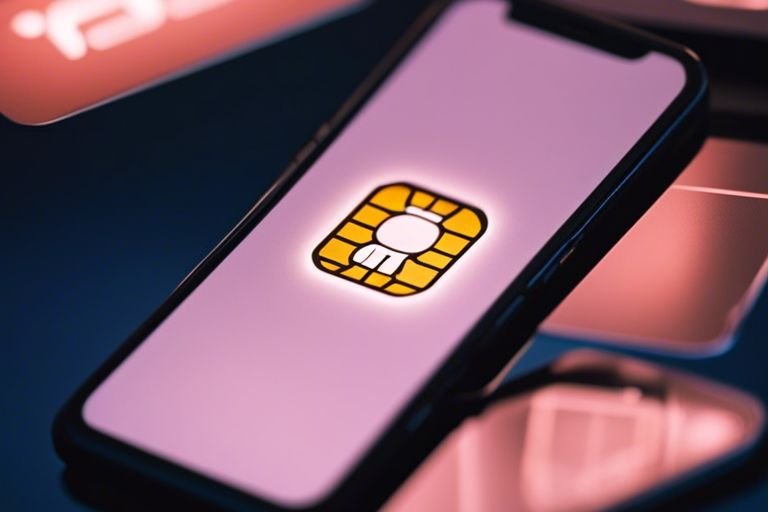
Just as technology continues to evolve at a rapid pace, the debate between traditional SIM cards and their newer counterpart, eSIMs, has intensified. With smartphones becoming more advanced and compact, the question arises: are traditional SIM cards becoming obsolete in the age of eSIMs? Let’s explore into the world of SIM cards and eSIMs to explore the future of mobile connectivity.
The Rise of eSIMs
What are eSIMs?
To understand eSIMs, imagine a SIM card embedded directly into your device, eliminating the need for a physical card. eSIMs, or embedded SIMs, are rewritable and programmable, allowing users to switch between different mobile carriers without changing physical cards.
How do eSIMs work?
What makes eSIMs revolutionary is their ability to be reprogrammed remotely, enabling users to activate a new mobile plan instantly. This technology simplifies the process of changing carriers, offering more flexibility and convenience to consumers.
eSIMs are paving the way for a future where the hassle of swapping traditional SIM cards is a thing of the past. The seamless integration of eSIMs into devices opens up opportunities for improved connectivity and streamlined user experiences.
The Decline of Traditional SIM Cards
Limitations of traditional SIM cards
One of the key limitations of traditional SIM cards is their susceptibility to physical damage or loss. Users often face the risk of misplacing their SIM cards, leading to service disruptions and the need for replacements.
Inconvenience of physical SIM swaps
To tackle the inconvenience of physical SIM swaps, users have to visit mobile stores or contact customer service to obtain a new SIM card. This process can be time-consuming and may involve additional costs for replacement SIM cards.
For instance, travelers frequently encounter challenges when switching between SIM cards to access local networks. The need to physically swap SIM cards not only disrupts service but also poses risks of damaging the fragile chip or losing the card altogether.
Benefits of eSIMs over Traditional SIM Cards
Convenience and ease of use
Even in their name, eSIMs exude convenience. No more fumbling with tiny cards or worrying about losing them. With eSIMs, switching carriers or adding a new plan is as simple as a few taps on your device. This streamlined process offers users unparalleled ease of use.
Increased storage capacity
One of the significant advantages of eSIMs is their increased storage capacity. Traditional SIM cards are limited in the amount of data they can store, whereas eSIMs can hold multiple profiles from different carriers simultaneously. This feature is particularly beneficial for frequent travelers or individuals who require separate personal and work phone lines.
It not only eliminates the need to physically swap out cards but also provides a seamless experience for users who can easily switch between profiles without the hassle of carrying multiple physical SIM cards.
Environmental benefits
On top of the convenience and increased storage capacity, eSIMs also offer environmental benefits. By eliminating the need for physical SIM cards, eSIMs help reduce electronic waste. The manufacturing and distribution of traditional SIM cards contribute to environmental pollution, making eSIMs a more sustainable choice for eco-conscious consumers.
Plus, the reduced reliance on physical materials in eSIM technology aligns with global efforts to minimize carbon footprints and promote a greener future.
The Future of Mobile Connectivity
Widespread adoption of eSIMs
One of the key aspects shaping the future of mobile connectivity is the widespread adoption of eSIMs. These embedded SIM cards allow users to switch between carriers and plans seamlessly, without the need for physical SIM cards. With more device manufacturers integrating eSIM technology into their products, it is poised to revolutionize how we connect and communicate.
Impact on mobile network operators
Impact on mobile network operators is inevitable with the rise of eSIMs. As users gain more flexibility and control over their connectivity options, traditional operators will need to adapt their business models to stay competitive. This shift may lead to increased competition, improved services, and new revenue streams for mobile network operators as they navigate the eSIM landscape.
Summing up
Considering all points, it is evident that traditional SIM cards are indeed becoming obsolete in the age of eSIMs. The convenience, flexibility, and efficiency offered by eSIM technology are paving the way for a digital revolution in the telecommunications industry. As we embrace this shift, it is clear that the future of connectivity lies in the hands of these tiny yet powerful embedded SIM cards.
